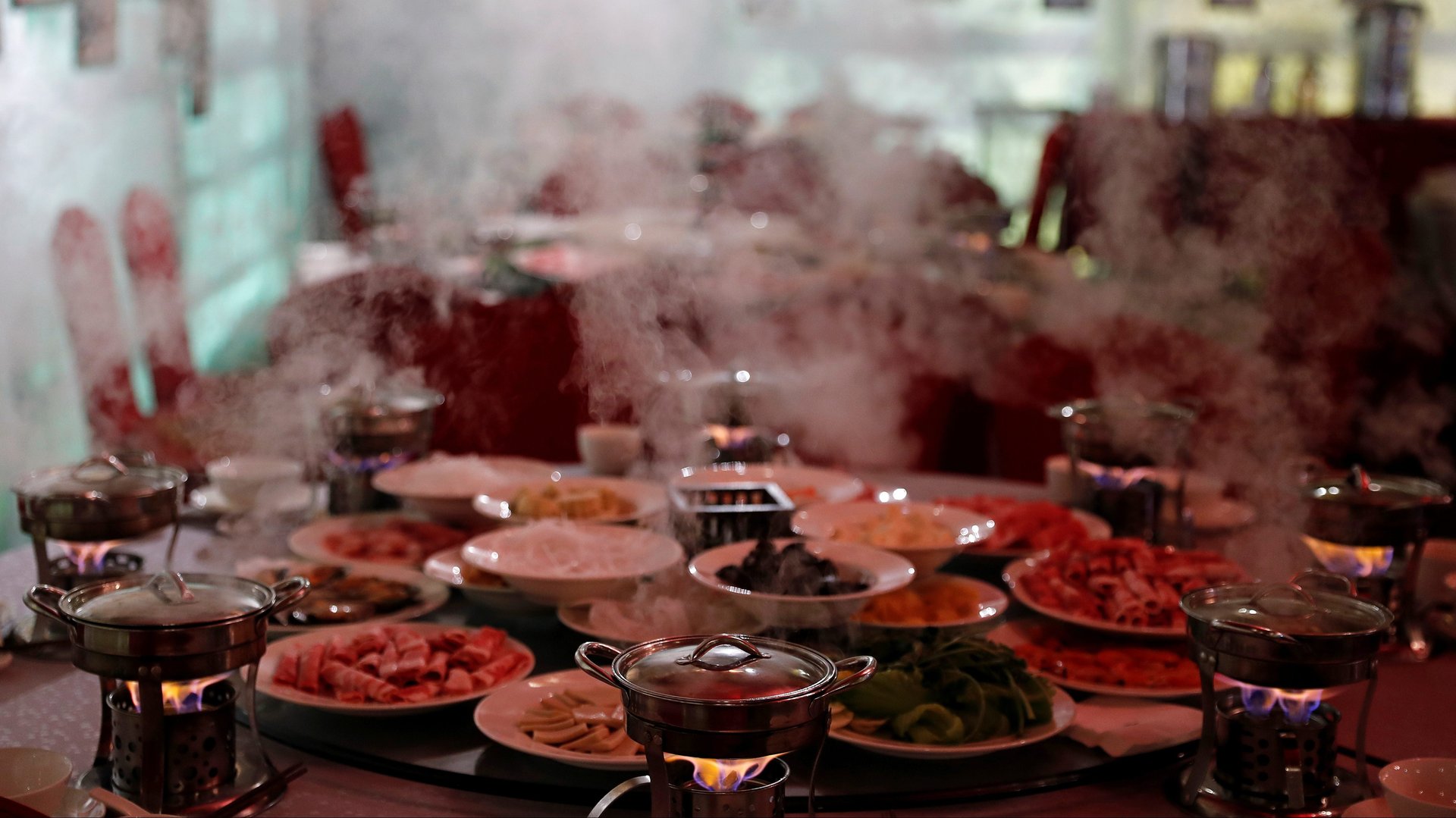China’s soaring hotpot stock hints at life beyond the pandemic
Lunar New Year is usually a popular time for dining out as families spread out all over China get together to celebrate. But on the eve of the holiday last year, panic was setting in about a new coronavirus. China instituted strict lockdowns, sending restaurant sales cratering 41% in January and February.


Lunar New Year is usually a popular time for dining out as families spread out all over China get together to celebrate. But on the eve of the holiday last year, panic was setting in about a new coronavirus. China instituted strict lockdowns, sending restaurant sales cratering 41% in January and February.
The hotpot, especially, conflicted with so many of the pandemic’s new social rules—it’s a form of dining where large groups dip a variety of veggies and meats into a communal broth. And yet China’s leading hotpot chain, the Hong Kong-listed Haidilao, has seen its stock rise 70% for the year. That’s one of several signs China is coming out on the other side as businesses adapt to the pandemic—though it’s still too early to comfortably rejoice.

China was the first country to experience the devastation of the pandemic, after the first cases were reported to the World Health Organization from Wuhan in December. In the first quarter of the year, China’s economy contracted 6.8%—its first quarterly contraction since its economic miracle took off. But from April, when the country pulled back from lockdowns with the help of mass testing and a QR code-based form of coronavirus “passport” to limit infections, things have been looking up.
Strong exports led China’s trade surplus to reach a record $75 billion in November, driven by US demand. Retail sales began growing again in August after months of declines. Rating agency Fitch in December raised its expectations for China’s economy for 2021 to 8%, from 7.7% earlier. Even for 2020, it’s expected to post some growth—around 2.3%—while major economies from the US to Germany expect to contract.
In its half-year interim results, Haidilao showed its turnover for tables at existing outlets was at 3.4 through June 30, compared with 4.9 last year. But it—and the restaurant sector as a whole—aren’t out of the woods yet. Consumers who diverted spending to food delivery services during the pandemic aren’t ready to fully commit to eating out, one of the biggest drivers of retail spending in China. Until they are, explained Todd Lee, executive director of global economics for data firm IHS Markit, China’s recovery won’t be complete.
“If consumption of services/products that required social gathering/interaction can return to pre-pandemic growth rates, then we know consumer behavior has resumed normalcy,” said Lee via email.
Lee said he’ll be watching closely to see when the growth of restaurant spending returns to its pre-pandemic pace; 10% higher than 2019 levels would signal a return to normalcy and would be “an extremely positive sign.” (He’s looking at box office numbers, too).
In November, the most recent data available, restaurant sales were about flat compared with the same month in 2019. A lot will depend, he said, on China’s vaccine rollout in the coming months. The country hopes to inoculate 50 million people before the next Lunar New Year Holiday, in February.
“Without full eradication of the pandemic, China’s economic recovery will reach a ceiling. Growth will decelerate if mass vaccine rollout is delayed,” said Lee. “China’s movie box office’s ‘bounce and fade’ rebound after the theaters reopened in late July exemplifies the limits of [how well] the economy can function with Covid-19 contained but not eradicated.”